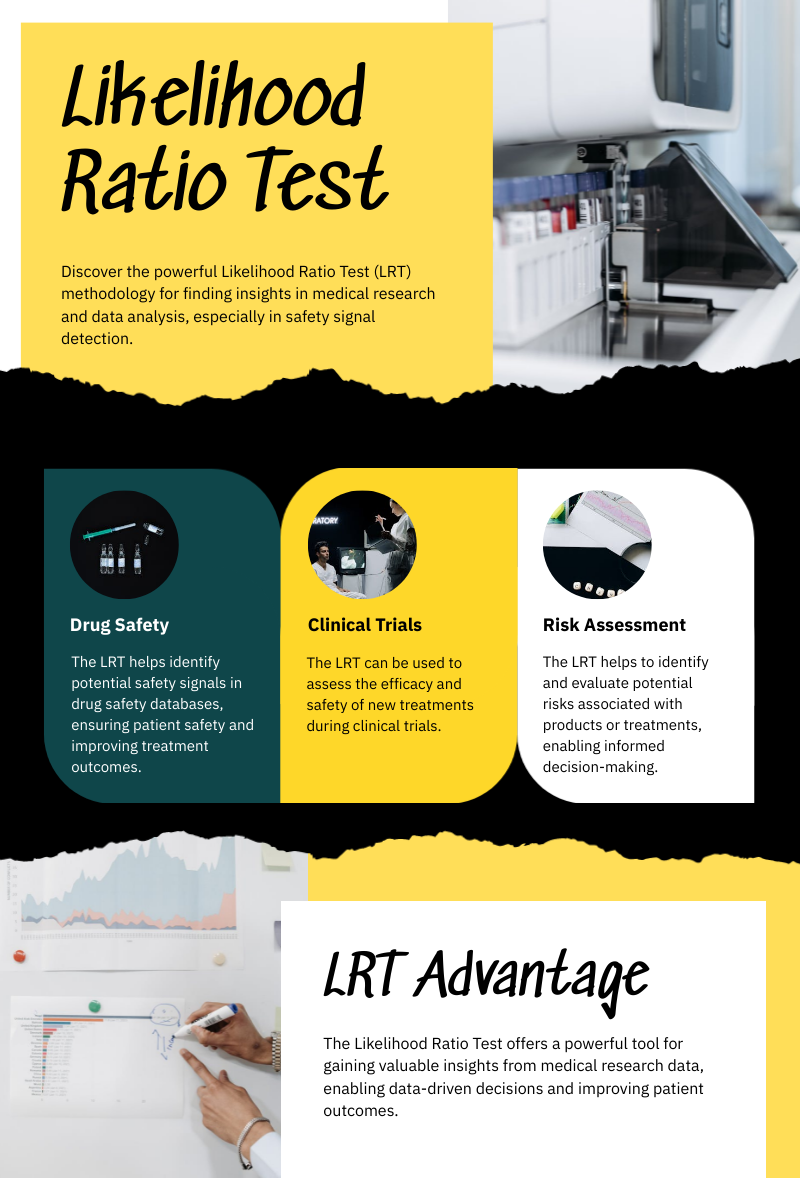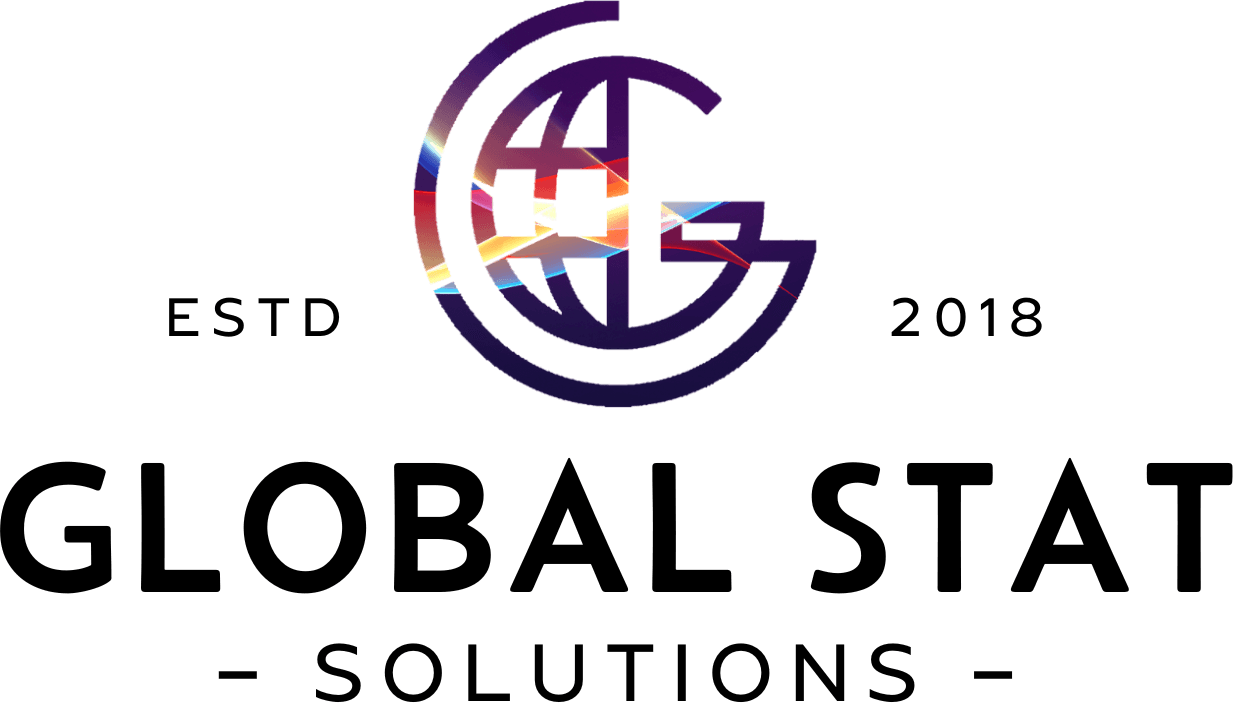Critical Insights in Medical Research
Critical Insights in Medical Research
Critical Insights in Medical Research
Critical Insights in Medical Research
Discovering Insights in Medical Research with the Likelihood Ratio Test (LRT) Methodology: Why It Matters for Your Health Solutions
Introduction
Are you looking to ensure the safety of your medical products or improve the reliability of clinical data in pharmaceutical research? The Likelihood Ratio Test (LRT) could be the game-changer you need. Widely used for signal detection in large drug safety databases like the FDA Adverse Event Reporting System (FAERS), LRT enables researchers to identify safety signals and make confident, data-driven decisions.
Since its introduction in 2012, the LRT methodology has been refined and expanded, including applications described in the book Signal Detection for Medical Scientists. Today, it plays a vital role in assessing treatment safety, identifying data anomalies, and evaluating risks for pharmaceutical and medical device products.
This blog will explore why LRT is essential for medical and pharmaceutical researchers and how it can provide the statistical rigor needed to validate findings.
Our team, led by experts like Dr. Ram C. Tiwari, applies advanced statistical methodologies to deliver precise insights. Visit our Knowledge Center for more details on our services.
What Is the Likelihood Ratio Test (LRT) and Why Does It Matter?
The Likelihood Ratio Test (LRT) is a statistical tool designed to identify safety signals from vast datasets, such as those used in drug or medical device safety surveillance. By comparing:
- A null hypothesis: Suggesting no signals.
- An alternative hypothesis: Indicating potential safety signals.
It provides actionable insights from complex, multidimensional data.
Its power lies in its flexibility, as LRT can be applied across a wide range of databases, including longitudinal datasets collected over time. This versatility makes it an indispensable tool for ensuring safety and compliance in industries like pharmaceuticals, biotechnology, and healthcare.
LRT in Action: Where and How It’s Used
The applications of LRT extend far beyond medical research. Here’s how it’s making an impact:
- Healthcare and Pharmaceutical Research: Detecting drug safety signals, identifying data anomalies, selecting clinical trial sites, and assessing treatment risks.
- Biotechnology: Developing diagnostic tools with enhanced sensitivity and specificity, ensuring accuracy in patient outcomes.
- Insurance and Risk Management: Evaluating the probability of claims or health risks based on customer data.
- Public Health Initiatives: Monitoring safety signals in vaccine, drug, or device surveillance systems like FAERS, enabling early detection of adverse events.
Want to learn more? Explore our statistical consulting services and methodologies here.
Real-World Insights: Case Studies on LRT’s Impact
In real-world applications, LRT has proven invaluable for addressing safety concerns and validating findings. For example:
- Osteoporosis Treatments: LRT identified long-term adverse events associated with certain medications. These insights led to critical updates in treatment guidelines, prioritizing patient safety.
- Drug Safety Monitoring: LRT enabled early detection of safety signals in a vaccine surveillance program, facilitating timely interventions.
To dive deeper, check out Dr. Ram C. Tiwari’s work on sequential and longitudinal LRT methods.
Why You Should Consider LRT for Your Business
If your organization relies on data to make critical decisions, the Likelihood Ratio Test can provide the robust statistical framework you need.
Whether you’re a healthcare provider, data scientist, or biotech researcher, LRT can help you:
- Refine data interpretation.
- Validate findings.
- Improve outcomes while minimizing risks.
At Global Stat Solutions, we bring decades of expertise to every project. Our consultants, including Dr. Ram C. Tiwari, use cutting-edge methodologies to provide actionable insights tailored to your specific needs.
Get in Touch with Us
Ready to harness the power of the Likelihood Ratio Test? Book a consultation or email us to discuss how LRT can meet your research goals.
For more resources and industry insights, visit our Knowledge Center. Let’s make your data work smarter for you!

Discovering Insights in Medical Research with the Likelihood Ratio Test (LRT) Methodology: Why It Matters for Your Health Solutions
Introduction
Are you striving for the safety of your medical products or the accuracy and reliability of your clinical data in pharmaceutical research? The Likelihood Ratio Test (LRT) is a powerful statistical tool that could be a game-changer for you. It is widely used for signal detection from large drug safety databases, such as the FDA Adverse Event Reporting System (FAERS). The LRT methodology, first published in 2012 Read Publication , was later extended to include other applications and associated algorithms in a comprehensive book, 'Signal Detection for Medical Scientists' .
With its robust applications in safety signal detection, clinical site selection for FDA Bioresearch Monitoring, and risk assessment, the LRT has become an invaluable tool in assessing treatment safety and efficacy, analyzing data fraud, and conducting risk assessments for drug/device products. For additional insights on statistical methodologies, visit our Statistical Methodologies Page .
In this blog, we break down why the LRT is essential for researchers, especially in medical and pharmaceutical fields, and how it can elevate your research by validating findings with statistical rigor. Our team, led by experts like Dr. Ram C. Tiwari , leverages this advanced approach to support clients worldwide. Explore more about Dr. Tiwari’s 40+ years of expertise and contributions to LRT methodologies through his Recent Publication .
What Is the Likelihood Ratio Test (LRT) and Why Does It Matter?
The Likelihood Ratio Test (LRT) is a statistical tool used primarily for safety signal detection from large drug or medical device safety databases. It compares the null hypothesis (often a baseline statement that there are no signals) to an alternative hypothesis (suggesting that there might be one or more signals in the safety database). The data is organized in a tabular form with rows as adverse events and columns as drugs, allowing for confident data-driven decisions. The power of LRT lies in its flexibility across complex databases, including longitudinal safety databases collected over time, and clinical trial safety databases. This makes it widely applicable in various fields.
LRT in Action: Where and How It’s Used
The applications of LRT stretch far beyond medicine and pharmaceuticals. Here's a closer look at industries and areas where LRT can solve complex challenges:
1. Healthcare and Pharmaceutical Research: Testing drug safety, detecting data anomalies, selecting clinical sites for FDA BIMO inspections, understanding treatment risks, and ensuring patient safety.
2. Biotechnology: Developing accurate diagnostic tests with high sensitivity and specificity.
3. Insurance and Risk Management: Assessing the probability of claims or health events based on lifestyle and medical data.
4. Public Health Initiatives: Tracking safety signals in drug/device/vaccine surveillance, such as in the FDA's FAERS, where LRT helps identify early adverse effects.
For an overview of our statistical consulting services and methodologies, visit our Knowledge Center .
Real-World Insights: Case Studies on LRT’s Impact
In medical research, LRT is often applied to evaluate diagnostic accuracy and detect potential risks over time. For example, in a study on osteoporosis treatment, LRT identified adverse events linked with the long-term use of certain drugs, thus providing critical data to inform treatment guidelines. You can read more about the groundbreaking work led by Dr. Ram C. Tiwari in his publication on sequential and longitudinal LRT methods here .
Why You Should Consider LRT for Your Business
If your organization relies on data-driven insights to make crucial decisions, the Likelihood Ratio Test could be the statistical backbone of your analysis. Whether you are a data scientist, healthcare provider, biotech researcher, or insurance company, the LRT can refine your data interpretation, helping you validate findings, improve patient outcomes, and minimize risks.
Global Stat Solutions is dedicated to bringing this advanced methodology to your projects. With decades of expertise in academia, government, and pharmaceutical industry, our consultants, like Dr. Ram C. Tiwari , apply the LRT to deliver precise, actionable insights that can guide your decisions with confidence.
Get in Touch with Us
Ready to enhance your research or data analysis with the Likelihood Ratio Test? We are here to help you understand how LRT can fit your needs. Book a consultation today through the link in our bio, Email us or let us know in the comments: How do you think LRT could benefit your organization’s research needs?
Are you looking to ensure the safety of your medical products or improve the reliability of clinical data in pharmaceutical research? The Likelihood Ratio Test (LRT) could be the game-changer you need. Widely used for signal detection in large drug safety databases like the FDA Adverse Event Reporting System (FAERS), LRT enables researchers to identify safety signals and make confident, data-driven decisions.
Since its introduction in 2012, the LRT methodology has been refined and expanded, including applications described in the book Signal Detection for Medical Scientists. Today, it plays a vital role in assessing treatment safety, identifying data anomalies, and evaluating risks for pharmaceutical and medical device products.
This blog will explore why LRT is essential for medical and pharmaceutical researchers and how it can provide the statistical rigor needed to validate findings.
Our team, led by experts like Dr. Ram C. Tiwari, applies advanced statistical methodologies to deliver precise insights. Visit our Knowledge Center for more details on our services.
The Likelihood Ratio Test (LRT) is a statistical tool designed to identify safety signals from vast datasets, such as those used in drug or medical device safety surveillance. By comparing:
It provides actionable insights from complex, multidimensional data.
Its power lies in its flexibility, as LRT can be applied across a wide range of databases, including longitudinal datasets collected over time. This versatility makes it an indispensable tool for ensuring safety and compliance in industries like pharmaceuticals, biotechnology, and healthcare.
The applications of LRT extend far beyond medical research. Here’s how it’s making an impact:
Want to learn more? Explore our statistical consulting services and methodologies here.
In real-world applications, LRT has proven invaluable for addressing safety concerns and validating findings. For example:
To dive deeper, check out Dr. Ram C. Tiwari’s work on sequential and longitudinal LRT methods.
If your organization relies on data to make critical decisions, the Likelihood Ratio Test can provide the robust statistical framework you need. Whether you’re a healthcare provider, data scientist, or biotech researcher, LRT can help you:
At Global Stat Solutions, we bring decades of expertise to every project. Our consultants, including Dr. Ram C. Tiwari, use cutting-edge methodologies to provide actionable insights tailored to your specific needs.
Ready to harness the power of the Likelihood Ratio Test? Book a consultation or email us to discuss how LRT can meet your research goals.
For more resources and industry insights, visit our Knowledge Center. Let’s make your data work smarter for you!
We would love to hear your thoughts and questions below. Let us make data work smarter for your success!
Discovering Insights in Medical Research with the Likelihood Ratio Test (LRT) Methodology: Why It Matters for Your Health Solutions
Introduction
What Is the Likelihood Ratio Test (LRT) and Why Does It Matter?
LRT in Action: Where and How It’s Used
Real-World Insights: Case Studies on LRT’s Impact
Why You Should Consider LRT for Your Business
Get in Touch with Us




